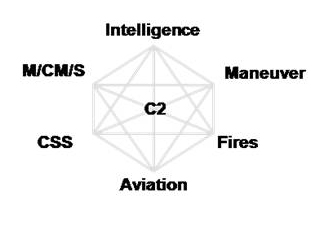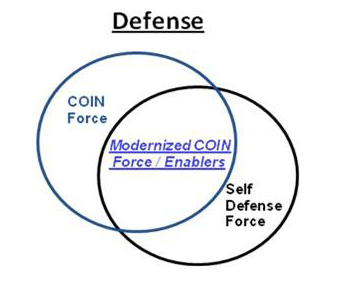One of the key areas to build security capacity in Iraq is the development, training, equipping, and sustaining of the armed forces under the Ministry of Defense - a completely different mission from the mission of developing the Iraqi Police because of the dissolution of the military after the 2003 invasion. The build-up of Iraqi Armed Forces, begun in 2004 with the training of the first infantry battalion, has continued to evolve to a focus on not only combat forces, but also the enablers required to sustain the force.
For 2008, there are a number of emphasis areas for the continued development of the Iraqi Armed Forces. These include ensuring that Iraqi forces are mostly self-sufficient in logistics, maintenance and life support. A second emphasis area is ensuring the appropriate size, capability and leadership of Iraqi forces such that they can assume additional battlespace from Coalition forces. The third emphasis area is to enhance the capabilities of Iraqi special operations forces. The final emphasis area is to ensure that the Iraqi Air Force and Navy growth are on track.
The Multi-National Security Transition Command - Iraq (MNSTC-I) has a major role in assisting this development, with the mission "to assist the Iraqi Government in the development, organization, training, equipping, and sustaining of Iraqi Security Forces and Ministries capable of defeating terrorism and providing a stable environment where individual freedom, the rule of law, and free market economy can evolve and, in time, will contribute to Regional Security in the Gulf Region." To implement this mission, there are three major focus areas -- ministerial level capacity for the Ministry of Defense and Ministry of Interior, armed forces, and police forces.
Assisting in the development of Iraqi Armed Forces (land, air and sea) also requires a "systems of systems" approach to build an enduring capability for the IAF. This enduring capability requires an "enterprise mindset" to manage those forces and capabilities through a balanced approach of the different enablers for the military: maneuver; fires; aviation; combat service support; mobility, countermobility, and survivability; intelligence; and command and control. This enterprise approach, derived from the war-fighting functions found in U.S. Army doctrine, helps to develop a balanced approach to build capability for today and the future.

The growth of the Iraqi Armed Forces since 2003 has been enormous, from the ground up to a force of over 200,000. This rapid growth has coincided with the current counterinsurgency (COIN) fight -- analogous to building an airplane while in flight. MNSTC-I's assistance to the Iraqi Armed Forces has focused on completing the growth of the COIN force, accelerating the enablers, and continuing to assist in the professionalization of the military. For the systems in the Armed Forces "star chart," expected areas of emphasis for the near-term are on command and control, combat service support, intelligence, and aviation.
All of this reform and rapid growth within the Iraqi Armed Forces is taking place in the context of the current COIN fight, which impacts the prioritization of effort. The immediate requirement is to create an IAF that is "sufficiently trained, sufficiently led, and sufficiently equipped" to have adequate numbers of forces to deal with the COIN fight -- while enabling the military to develop along a trajectory that ensures a professional "self defense force" for the long term, focused on providing security from external threats. The COIN fight must be won to ensure this transition; nonetheless the development and investment in the Iraqi Armed Forces must be informed by future requirements of the "self-defense force."

The "systems of systems" or enterprise approach represents the approach to developing a professional Iraqi Armed Forces that can address the challenges of today as well as tomorrow. The approach of ensuring security while transitioning is designed to provide security to the people of Iraq as an enduring capability, in accordance with the Iraqi Constitution.
Dr. Jack D. Kem is the Chief of the Combined Arms Center (CAC) Commander's Initiatives Group (CIG), Fort Leavenworth, KS. As the CIG Chief, Dr. Kem assists the CAC Commander by developing ideas and initiatives, conducting strategic planning, and conducting independent and unbiased analysis of the CAC Commander' areas of interest. Dr. Kem also hold a concurrent appointment as a Supervisory Professor in the Department of Joint, Interagency, and Multinational Operations in the US Army Command and General Staff College. Dr. Kem is currently on temporary assignment with MNSTC-I.
